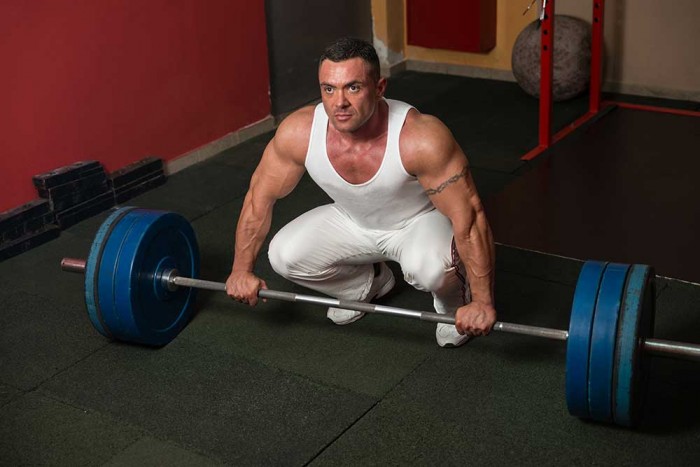
The Dead-lift: The Best Whole Body Movement
Joel Peterson – Level 5 Personal Trainer Apple Athletic Club
We’ve given you a good arsenal of resistance movements to balance out your workout regime. If you’ve missed them go back through our articles. Today I’m giving you the “Holy Grail” of whole body resistance training in the Deadlift. The vast majority of Americans over the age of 45 (75 percent) do not engage in any strength-training exercises at all. Without strength training, they risk weakened bones (osteoporosis), age-related muscle loss (sarcopenia), limited range of motion, loss of functional movement, aches, and pains.
If you’re like most people, you want to stay strong and agile… and you certainly want to continue to live independently doing things that you currently do even when you’re in your 80s and beyond. Resistance Training isn’t just for your upper body, it’s important for your lower body, too. Deadlifts offer a phenomenal lower-body workout.

There are two types of DEADLIFTS: Olympic Deadlift and Stiff Leg Deadlift (also known as Romanian Deadlift). Both movements are at the top of my list of essential exercises and for good reason which I will cover shortly. This week we are going to look at the OLYMPIC DEADLIFT. Next week we will cover the STIFF LEG DEADLIFT, so be sure not to miss it.
NOTE: YOU CAN DO THIS EXERCISE WITH A BARBELL, DUMBBELLS OR BANDS. THE MAIN THING IS TO HAVE ADEQUATE RESITANCE AND PERFECT FORM.
MUSCLES WORKED IN THE OLYMPIC DEADLIFT:
Main Muscles Worked: Lower Back, Calves, Forearms, Glutes, Hamstrings, Lats, Middle Back, Quadriceps, Traps and Chest.
Other Aspects
Those muscle groups cover everything from the calves through the thighs to the abdomen and chest and shoulders. Deadlifting also requires muscle coordination and relatively slow movement to raise a weight from the floor up the body until you are erect with the weight at arm’s length. It also involves flexibility, particularly in hips and knees, to maintain a straight back.
Safety Matters: How to Perform Deadlifts without Hurting Your Back
Anytime you lift a large amount of weight, you run the risk of hurting your back if it’s not done properly. Deadlifts are incredibly effective – just twice a week can give you great results – but it’s imperative that you use proper form to avoid injury. START OUT USING LIGHT, MANAGEABLE WEIGHT AND GRADUALLY INCREASE AS YOU GET STRONGER. NEVER SACRIFICE FORM FOR WEIGHT. IF YOU CAN’T HOLD FORM FOR TEN REPETITIONS YOU NEED TO LOWER THE WEIGHT.
- Stand in front of a loaded barbell.
- While keeping the back as straight as possible, bend your knees, bend forward and grasp the bar using a medium (shoulder width) overhand grip. This will be the starting position of the exercise. Tip: If it is difficult to hold on to the bar with this grip, alternate your grip (one hand pronated and the other supinated) or use wrist straps.
- While holding the bar, start the lift by pushing with your legs while simultaneously getting your torso to the upright position as you breathe out. Keep the bar close to your legs throughout the movement. Look skyward at all times to help keep your back straight and in line. In the upright position, stick your chest out and contract the back by bringing the shoulder blades back. Think of how the soldiers in the military look when they are in standing in attention.
- Go back to the starting position by bending at the knees while simultaneously leaning the torso forward at the waist while keeping the back straight. When the weights on the bar touch the floor you are back at the starting position and ready to perform another repetition.
- Perform ten to fifteen repetitions for three to four sets.
Caution:
- This is not an exercise to be taken lightly. If you have back issues see Dr. Ward before attempting the Deadlift.
- If you have a healthy back, ensure perfect form and never round the back as this can cause back injury. Be cautious as well with the weight used; in case of doubt, use less weight rather than more.
Variations: Dumbbells or standing on bands can be used as well though I find the bar version easier to perform.
Try doing this exercise twice a week with a two or three day break in between. A month from now you will notice a big difference in several areas – including balance and overall strength.
